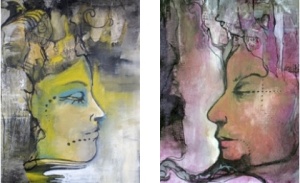Away from home we see ordinary things differently – a local hardware store, side street, service station, avenue of trees. There is no doubt that our outlook is broadened by the experience and our un-jaded eye finds art that reflects this. One of the attractions of traveling is the moment of coming home. With these keener eyes our home becomes somewhere to re-create those places and cultures we visited, so that the experience is ongoing and the influences persist.
Don’t forget, when looking at a work on canvas far from home, that it is relatively simple to have the canvas removed from the wooden frame. Roll it up for the journey and have it re-stretched once on home ground. Bigger or heavier pieces can be shipped; prints can be easily carried in a hard tube.






